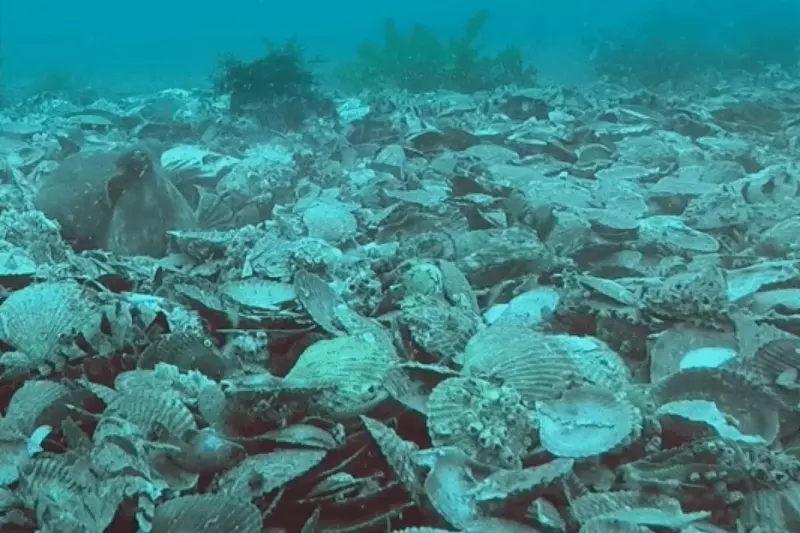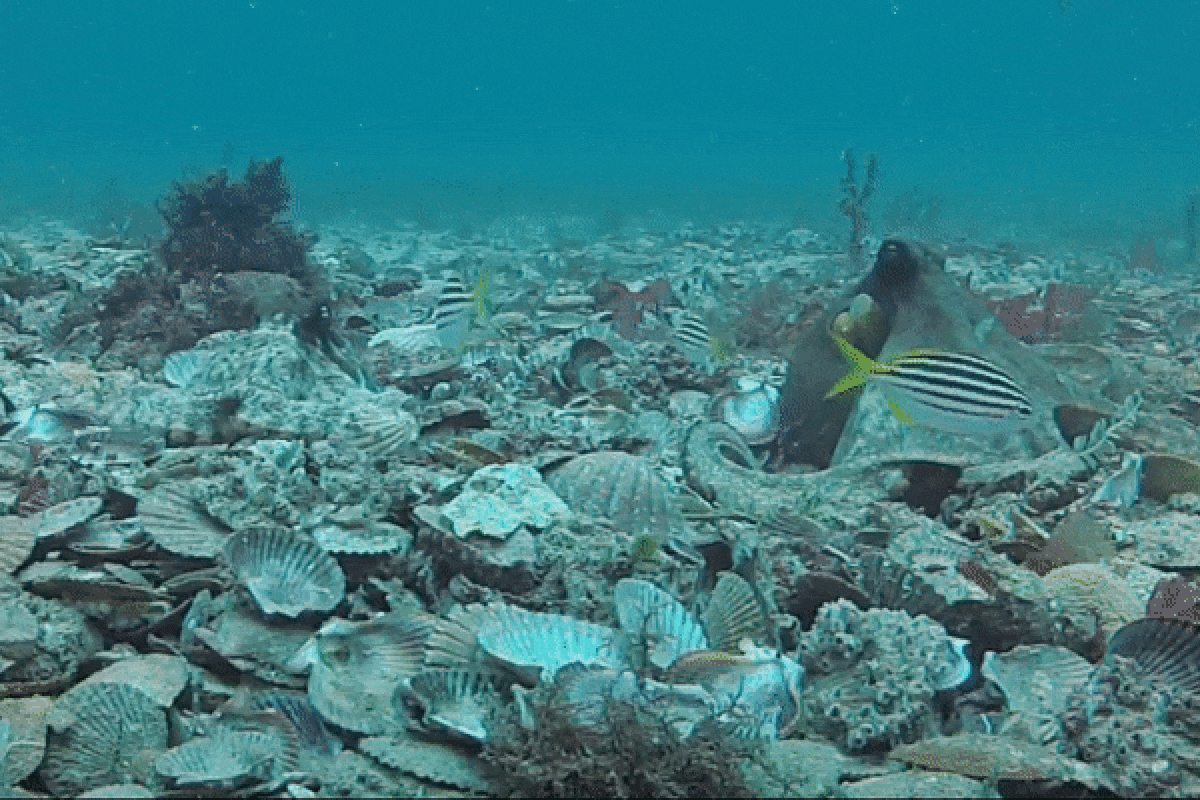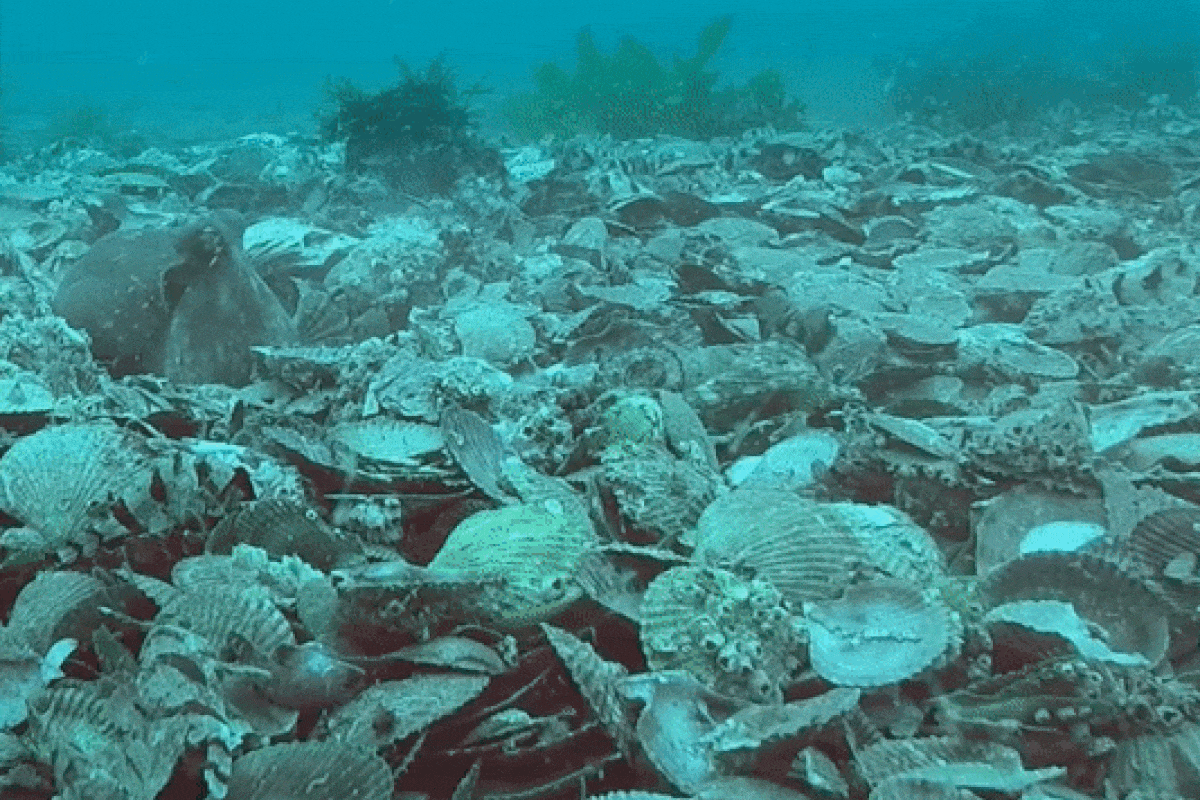Octopuses Caught on Camera Throwing Debris at Each Other
Scientists say this is the first time they have documented the behavior among the tentacled sea creatures

Octopuses are primarily anti-social loners. They don’t hunt in groups, and they lead solitary lives. When the circumstances are just right, they will opt to live near each other, but this is motivated by habitat needs, not a desire to be among their fellow tentacled creatures.
In fact, octopuses might not always enjoy being in close proximity with their neighbors: Sometimes, they’ll throw silt and shells at one another, according to new research published last week in Plos One.

Large numbers of Octopus tetricus, also known as the common Sydney or the gloomy octopus (yes, that’s their real name), gather in Jervis Bay, Australia, which has plenty of food and an ideal habitat for denning. Scientists have been observing the cephalopods at two sites they’ve nicknamed “Octopolis” and “Octlantis” for their high densities of octopus residents.
While analyzing more than 24 hours of underwater video footage taken at the sites in 2015 and 2016, the researchers were surprised to see the gloomy octopuses tossing algae, silt and shells through the water—sometimes hitting other octopuses.
In total, they noted 102 instances of throwing among roughly ten individuals. Two females made 66 percent of the throws, which tracks with past research that found female octopuses throw objects at males when they’re feeling harassed. Individuals of both sexes with darker-colored skin—which scientists generally associate with displays of aggression—appeared to throw with more force and were more likely to hit another octopus.
This observation was unexpected because very few animals throw things, and even fewer species lob projectiles at each other. Elephants, chimpanzees, mongooses, birds, capuchins, dolphins and, of course, humans are known to throw items at other members of their species, but overall, that list is not too long.
Scientists say this is the first time they have documented the behavior in octopuses.
“The throwing—or propelling or projecting—of objects that have been gathered and held is rare in the animal kingdom,” says study co-author Peter Godfrey-Smith, a science philosopher at the University of Sydney in Australia, to the Guardian’s Nicola Davis. “To propel an object, even for a short distance, underwater is especially unusual and also quite hard to do.”

“Throwing,” however, may not be the most accurate word to describe the octopuses’ behavior. With their arms, the creatures gathered silt underneath their bodies, then used an appendage known as a siphon to violently expel water and send the debris flying. This maneuver required them to move their siphon into an unusual position, which researchers say suggests they were doing it deliberately.
“Force is not imparted by the arms, as in a human throw, but the arms organize the projection of material by the jet,” the researchers write in the paper.
Scientists are still puzzling over the octopuses’ motivations for hurling items through the sea, but they tried to make some sense of the behavior by documenting the context of the throws. For instance, just over half of the throws occurred within two minutes of an interaction between octopuses, such as fighting or mating. The most common object the octopuses tossed were shells, which they often chucked while cleaning their dens or after eating. And the next most common projectile was silt, which appeared to be their ammunition of choice when interacting with their neighbors. The octopuses also threw debris toward the cameras on a handful of occasions.
/https://tf-cmsv2-smithsonianmag-media.s3.amazonaws.com/filer_public/d1/1d/d11d84c1-58e3-4d25-9a60-1a21a4fa44ce/low-res_journalpone0276482g001png.png)
One octopus, in particular, seemed to provide evidence that the sea creatures may actually be trying to attack each other and that the behavior played at least a partially social role. In two observations, this octopus repeatedly threw debris at another. These and other interactions may have arisen out of a desire to assert personal space, the researchers posit.
“They had dens right next to each other, and I think they didn’t like to be in each other’s faces as much as they were,” says Godfrey-Smith to the New York Times’ Darren Incorvaia.
Still, the octopuses’ true intentions largely remain a mystery. Not all tosses were directed at a neighbor, and some throws could have hit another octopus by chance.
“It’s really hard to infer the motivation of animals,” says Christian Nawroth, an agricultural scientist at the Research Institute for Farm Animal Biology who was not involved in the study, to the Atlantic’s Marina Koren.
/https://tf-cmsv2-smithsonianmag-media.s3.amazonaws.com/accounts/headshot/SarahKuta.png)


/https://tf-cmsv2-smithsonianmag-media.s3.amazonaws.com/accounts/headshot/SarahKuta.png)